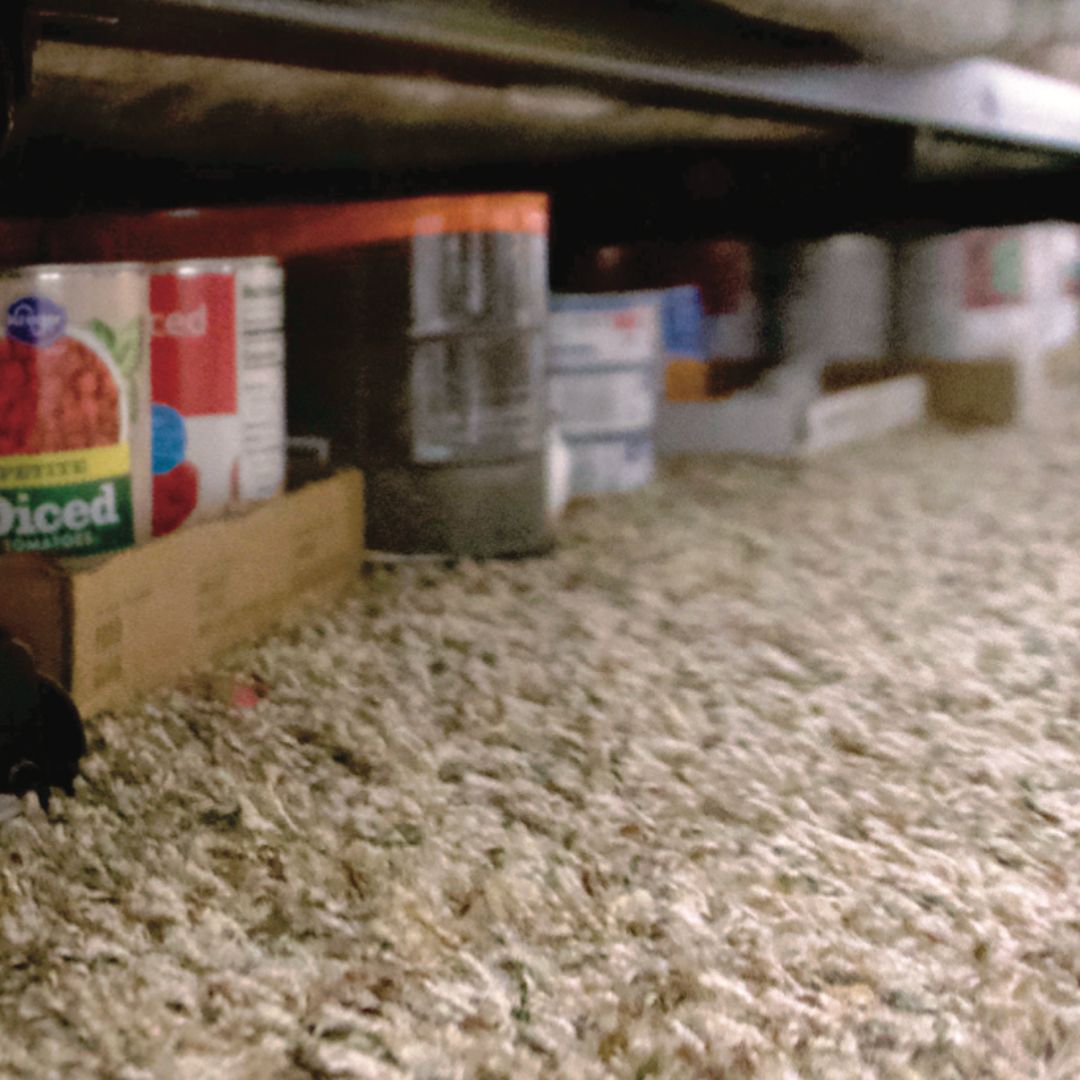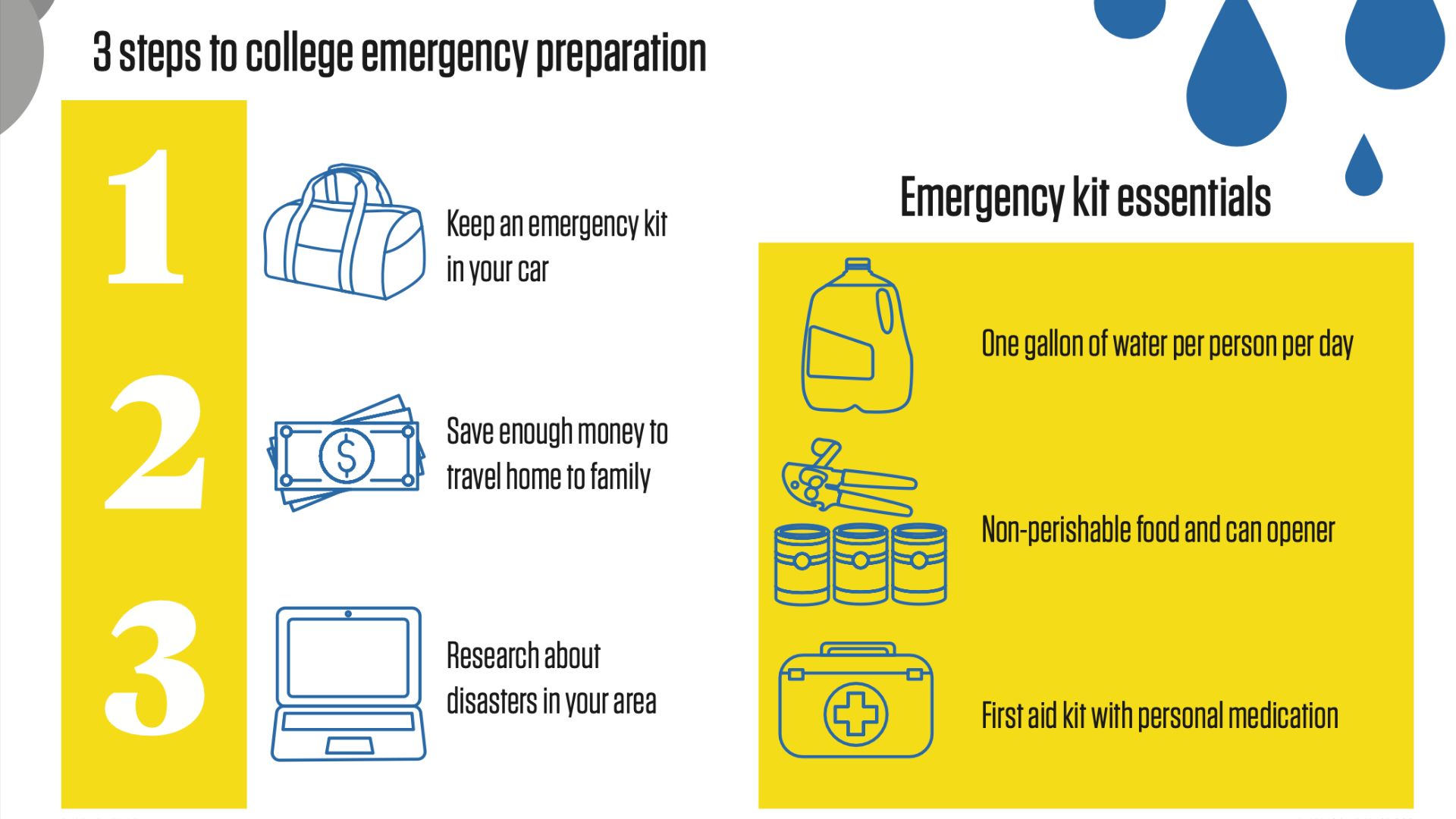
By Evadne Hendrix
Thousands of students and employees streamed out of the Harold B. Lee Library as water crept up under their feet. Little did those participating in the mass exodus know that a broken water pipe had flooded the library. The water threatened BYU’s expansive and expensive book collection.
Tamie Harding, the university’s emergency manager, remembered that the university had an effective emergency plan in place. The staff members were prepared with plastic sheets that could cover the books. The library quickly got the crisis under control, and students were soon allowed back in the library.
“Emergency plans don’t have to be complex — they can be simple,” Harding said.
As the Salt Lake Temple makes its earthquake preparations and Church leaders invite members to prepare for the Savior’s Second Coming, The Church of Jesus Christ of Latter-day Saints seems to be sending a message encouraging emergency preparedness. With all the natural disasters that fill our news feeds, it isn’t hard to imagine why.
For low-income students with many demands on their time and money, emergency preparedness can be intimidating. The college experience is all about prioritizing, and emergency preparedness seems like an easy thing to cut out. However, as natural disasters and other types of emergencies become more common, even small preparations are becoming more essential.
Just as plastic covers saved BYU’s expensive book collection, a can of food or extra bottle of water could make a big difference to individuals in our college community. The Red Cross recommends starting with a 3-day evacuation kit and 2-week home storage. These should include one gallon of water per person per day, non-perishable foods, a flashlight, and a medical kit.
Tamie Harding oversees the emergency preparation for the university. She pointed out the importance of staying up to date during a crisis. Some natural disasters take down telephone towers and disrupt access to information. Simply creating a meeting place or communications plan ahead of time can provide confidence during an emergency. Some smaller crises can be averted easily, but only if the community knows about them. BYU has its own Y-Alert system for communicating emergency notifications. Students can download the app and stay up to date on campus threats both big and small.
“One important item that students should have is enough money available to return home in an emergency,” Harding continued.
Ready.gov encourages individuals to specifically prepare for common threats in their area instead of trying to prepare for every possible emergency. New emergency preparedness planners often feel overwhelmed by long lists of costly supplies. Identifying and focusing on the most likely disasters within a given area shortens the supply list and increases the likelihood of being truly prepared for an emergency.
Be Ready Utah both shows the most likely disasters in the area and explains how to prepare for the highest risks: drought, earthquake, and winter weather. Individuals can prevent drought by conserving water. Moving heavy objects from places that could shake loose and fall and storing an emergency kit in an easy to access location helps prepare for earthquakes.
Lauren Allred, a young adult living in Utah County, saw the danger of snowfall while visiting her family for Thanksgiving. Music blasted on Lauren’s radio as she and her family raced down the road. The car bustled with conversation as everyone discussed their favorite holiday meals and their excitement to spend the holiday with their uncle. Even though winter had hardly begun, the Montana forests were already covered in snow.

Suddenly screeching tires cut through the chatter. Lauren’s car slipped on ice and ran right off the road and into the deep snow.
Lauren had lived in Montana long enough to know that tow trucks would have just as much difficulty navigating the roads safely as she did. Nobody would come help her, she and her family would have to dig themselves out.
Despite the danger, Lauren remained calm. She opened her trunk and found her snow shovel right where she knew it would be. Lauren dug herself out and returned to the road with little complication. Her careful preparation averted the potential crisis.
“I knew how to react, so I was calm. I was cool,” Allred said. “I feel like when you overreact, that’s when bad things start to happen.”
According to Allred, car problems are the most regular emergencies among college students and young adults. Especially in snowy place like Utah, the winter months can make small accidents take a turn for the worse.
Students can prepare by keeping a basic first aid kit, car tools, and extra food and water in their car. During the winter months an extra pair of shoes, snow shovel, and tarps help as well.
Allred continued to discuss the importance of quality research. Young adults cannot always afford the most advanced gear, but they can learn emergency protocols and skills to keep them safe. Basic and advanced tools are only as valuable as the person holding them.
One of the biggest keys to emergency preparedness is confidence. Individuals who panic are more likely to make mistakes. Those who have done their research can make the most of extenuating circumstances. Sometimes confidence and know-how are more important than the tools on hand.
BYU organizations host many different emergency preparedness events to help students grow their confidence and learn valuable skills in advance. The emergency preparedness office will host an earthquake specific training called “the great shakeout” in April alongside other events. BYU’s Y-serve office often hosts events with visitors from The Red Cross and opportunities to make and send kits to those suffering from natural disasters.
Regardless of the circumstance, there are tools available both at BYU and in the state to help. Be Ready Utah also has preparedness ideas for problems unrelated to natural disasters like cyber security, abuse, and mental health.




